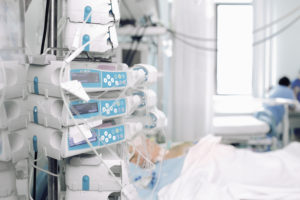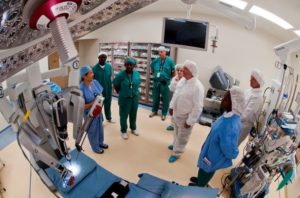Medical Device Delivery Issues
Why it’s so important to have an FDA approved Process…

Here is the Million Dollar Question – how important is it to have an established process & follow it?
When we are asked to help teams with their medical device challenges – whether it’s for FDA submittals or software quality engineering (SQE) support – we always start by asking: what type of established process do you follow?
Often times they don’t have the resources (people, tools) necessary to establish, maintain and follow a solid Quality Management System, (QMS), so it’s left to either the Developers or SQE’s to fill the regulatory gaps, in order to ensure nothing slips through the cracks before the product is released.
Unfortunately, this type of arrangement (where the organization is too busy to establish & maintain a repeatable process) becomes a source of major headaches down the road…when they are invariably audited.
Here’s another sad fact. Companies try to save time by doing the bare minimum regulatory work – but, it eventually costs them a lot more time when everything is halted during a painful 3-4 week onsite FDA audit.
We want to help you avoid that potentially calamitous inspection.
Let’s start with the basics.
For your team to be successful at building a medical device, there needs to be a touchstone for all of them to rely upon:
- Create and document a process
- Train team members on the process
- Capture documented proof that team members were trained before beginning the activity
This helps to avoid misunderstandings across the organization – and it helps prevent nasty consequences after you ship the device.
If your company manufactures medical devices, regardless of class of device or where you plan to sell it, you need to follow governing regulatory practices.
If your medical device will be sold in the US, the FDA mandates that you need to establish a Quality Management System which contains current good manufacturing practices, (CGMPs) per 21 CFR Part 20 – Quality System Regulation.
If your medical devices will be sold in Europe, then you must follow CE and ISO 13485:2016. (medical devices, quality management systems, requirements for regulatory purposes)
In order to help set up a QMS Process, we need to determine what type(s) of medical device(s) they plan to build, how & where they will be built, and where in the world they will be sold.
What are the benefits of establishing and following good practices?

There’s plenty!
First, every member of your team (during all stages of the software development lifecycle) will be on the same page – if mandatory training is implemented – which means you’ll likely have fewer regulatory issues post release.
Plus, when you do experience an FDA audit – it should go a lot smoother, and take less time.
Then there’s patient safety.
If you’re faithfully following FDA regulations, your customers will trust you more. Therefore, they’ll be more willing to use your products in clinical environments because they believe their patients will be safe.
Let’s do a quick comparison of a minimal to poorly documented process versus a properly implemented & faithfully followed process.
Minimal to Poorly Followed Regulatory Process
- Marketing Team/Person doesn’t have experience working with clinical customers
- Doesn’t know how to elicit thorough requirements in accordance with FDA
- Allows too many changes, especially last minute – which risks product safety measures
- Quality Engineer Team/Person is barely aware of all the regulations
- Doesn’t ensure documented regulatory procedures are followed across the team
- Isn’t aware of proper documentation and best practices for all members to follow
- Software Engineers don’t understand the need for thorough specifications
- Expected software engineering documents are incomplete
- Documents aren’t peer reviewed by QE / aren’t completely vetted for traceability to approved requirements
- Isn’t aware of his/her role in reviewing all hazards
- Doesn’t review/sign off approved test cases prior to Run For Record activities
- Software Quality Engineers aren’t utilizing peer review when creating
- Software Test Plan/Strategy documents
- Software Test Cases (technical/process reviews)
- Test Case Traceability
- Run For Record activities and requirements
- IV&V deliverables aren’t properly identified or executed by the appropriate designated team members
- UAT is an unknown concept – hence invalid delivery to client site
- CAPA issues will overwhelm the team
- FDA Audits will be scheduled fairly quickly after release, potentially leading to:
- Recall
- Consent Decree
- Company is put on a very short leash until fully demonstrable process is developed & implemented throughout the organization
Fully Adopted & Faithfully Executed Process
- Marketing Team/Person has a thorough understanding of clinical customer interactions
- Knows how to work with customers to elicit necessary device requirements
- Fully understands the risks and hazards associated with unusual demands and can respond accordingly
- Works with the R&D team to ensure regulatory, patient safety and product needs are met
- Quality Engineer Team/Person fully understands their part in the process, ensures the R&D team is up to speed on the regulatory requirements across the board, and peer reviews all required documentation to ensure all processes are followed.
- Software Engineers are fully versed in appropriate documentation practices for all their deliverables, and they work with the other members of the team to ensure all parties concur with the design review of the development work they execute, before, during and after product release.
- Software Quality Engineers understand their role completely and they ensure the following activities are properly accomplished:
- Software Test Plan/Strategy documents completed & reviewed
- Software Test Cases (technical/process reviews)
- Test Case Traceability (complete requirements coverage is documented)
- Run For Record activities and requirements are conducted properly
- Post Run For Record documentation is completed, reviewed and stored properly
- IV&V is thoroughly planned, reviewed, executed and documented by appropriate members of the team.
- CAPA Issues will be minimal with no high or medium severity defects reported.
- FDA Audits, when they occur, are brief, and are routinely completed with a minimum of follow on FDA requested items required.
- Design Reviews will be held on a regular basis
If you are contemplating building a new medical device – or your company has been in existence for a while, and you are about to build a new device after quite some time – or possibly the team members with most of the domain or regulatory experience have moved on…then call us.
Our job is to help you build and deliver high quality, reliable medical devices which help save lives – on time, repeatedly.



